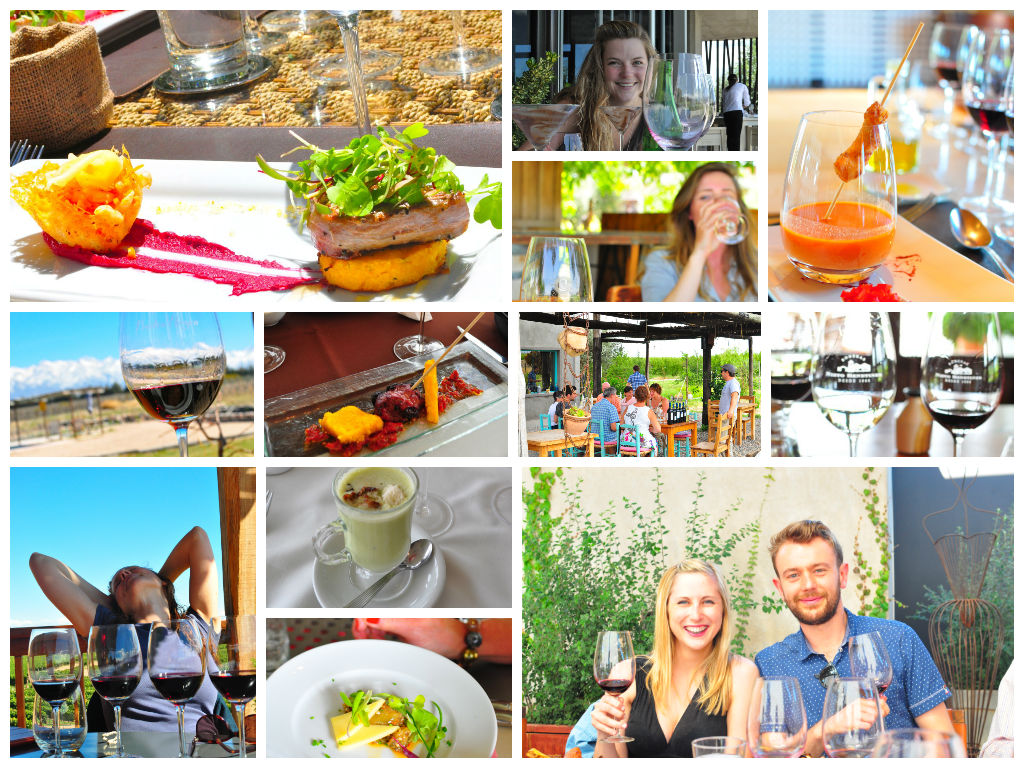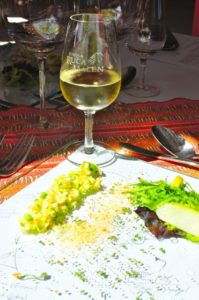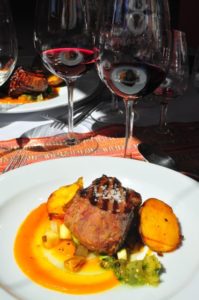Ever since moving to the sunny and pleasant land of Mendoza, my favourite pastime has been eating in wineries. Yes, the mountains are awe-inspiring, the sunny days permeate your skin to warm your soul and the people all flatter you till your knees melt; but for me, it’s all about lunch…
Ruca Malen has been one of the top foodie destinations in Mendoza for quite some time and since winning Best Wine Tourism Restaurant (in the world no less!) in 2013, the secret is definitely out. Although when I went there for lunch the other day, chef Lucas Bustos revealed another secret about the restaurant, which is rather less discovered.
On most winery lunch dates (you’re just beginning to see the tip of the iceberg of how often I indulge in them) I’ll gobble up each course contentedly satiating myself in the thoughtful plays between texture, taste and colour. All the while, working out the wine pairings with my figurative devil sommelier on one shoulder and angel chef on the other. They whisper, babble and whimper to each other as they watch over me stuffing down another six courses, occasionally parping up to comment on a pairing out loud.
Ruca Malen has been on our radar for some time now, so when I went a month ago I thought that there was almost no stone left unturned in my experience of dining at Ruca. After a quick chat with Lucas though, he’d given my shoulder friends the proverbial slap with a wet fish and they were left belly-up and wriggling on the floor. It turns out we’d missed the biggest part of the menu concept!
As a former, and partially rehabilitated, literature student, it is an understatement to say I like a good story. And a good story is exactly what Lucas tries to weave into his tasting menus, whether you notice it or not. Admittedly I had not noticed the beginning of the tale, my stomach getting the better of me as I tore apart the fancifully decorated plate of quinoa, herbs, apple and nutty breadcrumbs. I reveled in the crisp, tart apple, and the aromatic herbs with the bright orchard fruit and refreshing acidity of the Chardonnay. What I’d neglected to notice though was that the scribbling under the food, aside from just looking like a nice map of Argentina and an explanation of the ingredients, was an account of the native tribes that inhabited the land and the food that they would forage for. From the West came the quinoa, harking back to the Incas in Andean lands; from the East the apple and fruit from more tropical climates; and in the centre the breadcrumbs (admittedly a bit before their time) from the wheat bowl of Argentina – the pampas. It was an edible map of the land before time!
The next course was just as steeped in Argentina’s pre-Milanesa days: a piece of cured trout on a large stone with sun dried tomatoes and crunchy sweet potatoes. It was telling the tale of the culinary progression of the Incas to drying meats and fish, and preserving vegetables and fruit. I felt bad for the Incas, Huarpes and Puelches that they hadn’t nailed wine production yet, because the rich smoked trout was wonderful with the lightly oaked, fruit forward Yauquen Malbec Cabernet blend. Another proof in the pudding that red coloured fish is so often better with red coloured wine (my chef and sommelier shoulder amigos were both securing a noose around their necks at this point. Sweeping wine generalisations galore are my specialty after a couple glasses, although the statement was true in this case.)
The next dish took a traditional dough from the 1700s (a wheat porridge), a roasted beetroot cream and the all-important arrival of cheese in Argentina’s history! We can thank the many European immigrants for the landing of cheese and most things dairy. A sharp goat’s cheese tied it all together and provided a fun contrast to the mellow smoothness of the Merlot.
And even without seeing the menu, you know the story from here… we arrive to the renowned Argentine steak. Grilled to mouth-watering perfection with a healthy sprinkle of salt, a swathe of sweet potato puree and that touch of green veg to make you feel good. It went with not just one big red, but two. Man had triumphed, flourished, and we are all now a little bit happier, rounder and fuller for it.
Aside from the fact that it all tasted very good, it was an added bonus to know that there is a narrative carefully behind each step of the food experience. It’s subtle, and you have to look for it – there’s nothing worse than having to decode your plate before eating it – but if you want the story, it’s there too.
While you could easily be swept away by the culinary story of the food, the sensory narrative of the wine pairing is never to be underestimated. When a wine is well paired it makes the dish more nuanced and shows different profiles, flavours and characters of each protagonist, but one of the greatest roles of wine in a meal is its muscle and mind relaxant properties. You arrive there: tense, tight and probably tired; a glass of wine helps you unwind the twisted tension knots, lighten the mental burden and blur out everything around you to focus on the person – or food and wine – in front of you. For me a pairing is not just about the taste and textural relationship, but also the mood enhancing way it carries you through the journey. To offload you, entertain you, and then return you relaxed, recuperated and hopefully just a little bit merry to carry on with your normal life afterwards.
Next season’s menu – Lucas spilled the beans – will be a story of the journey of wine: from the vineyard, to the fermentation tanks, through the barrel, and into the glass. There will be steel plates and foam involved. I think that is excuse enough to book in another day of winery lunching in Mendoza.
If you like the sound of lunch in Argentina’s wine country, check out our Mendoza winemaker tour.


